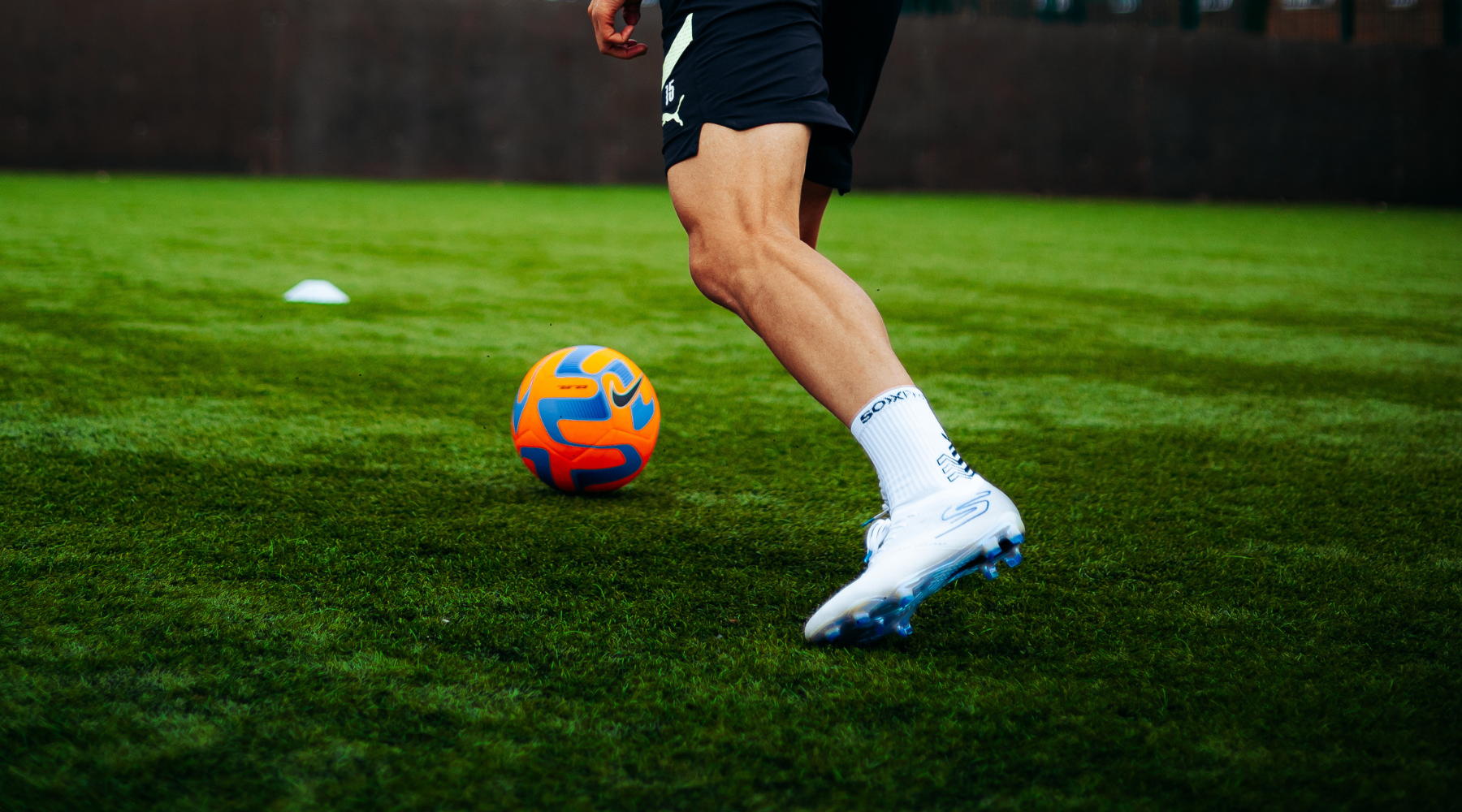In una partita di calcio, i millisecondi possono fare la differenza tra vincere e perdere; le possibilità vanno e vengono in un batter d'occhio. I giocatori che coltivano la velocità sono temuti dagli avversari, mentre i giocatori più lenti sono spesso inefficaci e possono perdere la palla.
Che si tratti di un difensore che insegue la corsa di un attaccante, di un'ala che cerca di battere il suo uomo o di un centrocampista che copre il terreno per intercettare un passaggio, la velocità è fondamentale per le prestazioni calcistiche.
Per troppo tempo la velocità è stata vista come una qualità intrinseca piuttosto che come qualcosa che si può sviluppare attraverso la pratica; tuttavia, questo non potrebbe essere più lontano dalla verità.
Sebbene la velocità possa in parte essere attribuita a tratti ereditari, come una percentuale maggiore di fibre muscolari di tipo IIb, rimane un’abilità che i giocatori possono e devono sviluppare per migliorare le loro prestazioni in campo, nonostante questo contributo genetico minimo. La scienza ha dimostrato che attraverso l'allenamento puoi cambiare l'architettura dei tuoi muscoli, migliorare la tua biomeccanica e potenziare la coordinazione neuromuscolare, catapultandoti in avanti ad ogni passo.
Poiché il gioco moderno è diventato più veloce, sono emersi ulteriori studi per rivelare i modi migliori per migliorare la velocità in campo. Il problema è che il calcio non è semplice come correre in linea retta. Per troppo tempo i giocatori hanno utilizzato tecniche di allenamento obsolete progettate per altri sport nella speranza di diventare più veloci in campo. Ho avuto la fortuna di lavorare con giocatori che esercitano il loro mestiere nei migliori campionati del mondo, come Premier League, Serie A e Champions League. Ciò che diventa subito ovvio quando si lavora con giocatori di calcio professionisti d’élite è che i giocatori più veloci in linea retta non sono sempre quelli che arrivano per primi alla palla in partita. Questo perché lo sprint in linea retta è privo di contesto, il calcio è molto più complesso.
L’allenamento per essere veloci in linea retta è inadeguato; diventare veloci in campo non è semplice come allenarsi per uno sprint di 100 metri. Considera gli esempi menzionati in precedenza: potrebbe trattarsi di un rapido cambio di ritmo, un'accelerazione o un giocatore che accelera fuori dal segno. La velocità viene utilizzata in vari modi in campo. Non è necessariamente la velocità massima che ti definisce, ma piuttosto la velocità con cui ci arrivi: tutto si riduce al tempo. La chiave è il tasso di variazione della velocità o accelerazione. Quando si precipita per raggiungere la palla prima di un avversario, il giocatore che riesce a raggiungere più rapidamente la sua velocità massima probabilmente vincerà la corsa a piedi, anche se l'avversario ha una velocità massima più alta.
La soluzione alle tecniche di allenamento obsolete e prive di contesto è l’allenamento di accelerazione, che si concentra sullo sviluppo di contrazioni muscolari concentriche esplosive che potenziano ogni passo. Ciò consente ai giocatori di raggiungere la velocità massima più velocemente e di rispondere rapidamente a cambiamenti improvvisi nel gioco.
Fortunatamente per te, abbiamo esaminato attentamente la ricerca e scelto tre esercizi che sfruttano alcuni dei più recenti concetti di allenamento venuti alla luce. Questi esercizi migliorano la tua capacità di staccarti dal difensore allenando la contrazione muscolare esplosiva-concentrica responsabile di quell'esplosione di velocità. Eseguiti abbastanza frequentemente, questi esercizi svilupperanno l'esplosività necessaria per accelerare più del tuo uomo e portarti per primo sulla palla.
Esercizio 1: cambi di gamba
Inizia in una posizione di affondo, con un piede in avanti e l'altro dietro di te. Abbassa il corpo piegando le anche e le ginocchia. Sposta il peso sulle dita dei piedi in modo che il tallone del piede anteriore sia sospeso appena sopra il suolo. Mentre rimani in questa posizione bassa, cambia rapidamente le gambe con un movimento a forbice. Attacca l'atterraggio sull'avampiede, mantieni l'equilibrio e ripeti. Potrebbe esserci una pausa tra le ripetizioni, ma il cambiamento deve essere sempre esplosivo. Ripeti per 12 cambi e completa 3 serie.
Esercizio 2: Limiti laterali
Begin standing tall on your toes. Drop down and push off your outside leg to leap to the side as far as possible. Stick the landing with the opposite leg. Repeat on the other side. Complete 12 repetitions for 3 sets.
Esercizio 3: partenza del velocista in ginocchio
Inizia su un ginocchio e il peso sulla gamba anteriore. Spingi con forza la gamba anteriore nel terreno per saltare in alto. Mentre salti, fai oscillare la gamba posteriore in avanti, sollevando il ginocchio: questo ti aiuterà a saltare più in alto. Ripeti per 6 salti, poi alterna i lati. Completa un totale di 3 serie per gamba.
Lottare per tenere il passo in campo è una sfida che molti giocatori affrontano, spesso a causa di routine di allenamento obsolete e del mito secondo cui la velocità è qualcosa con cui si nasce. Ma la scienza ci dice il contrario. La chiave per diventare più veloci dove conta sta nell'accelerazione dell'allenamento: la potenza muscolare esplosiva e rapida che ti lancia fuori bersaglio e ti dà un vantaggio in termini di velocità. Affinando questa abilità nel tempo, i giocatori possono costruire una vera velocità rivoluzionaria, trasformando il potenziale grezzo in risultati reali ogni volta che scendono in campo.










